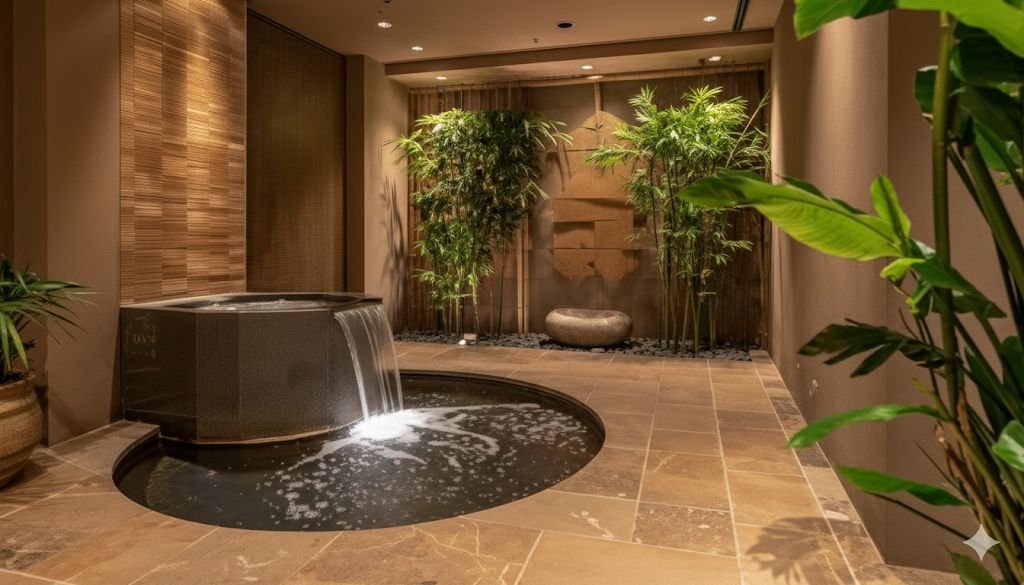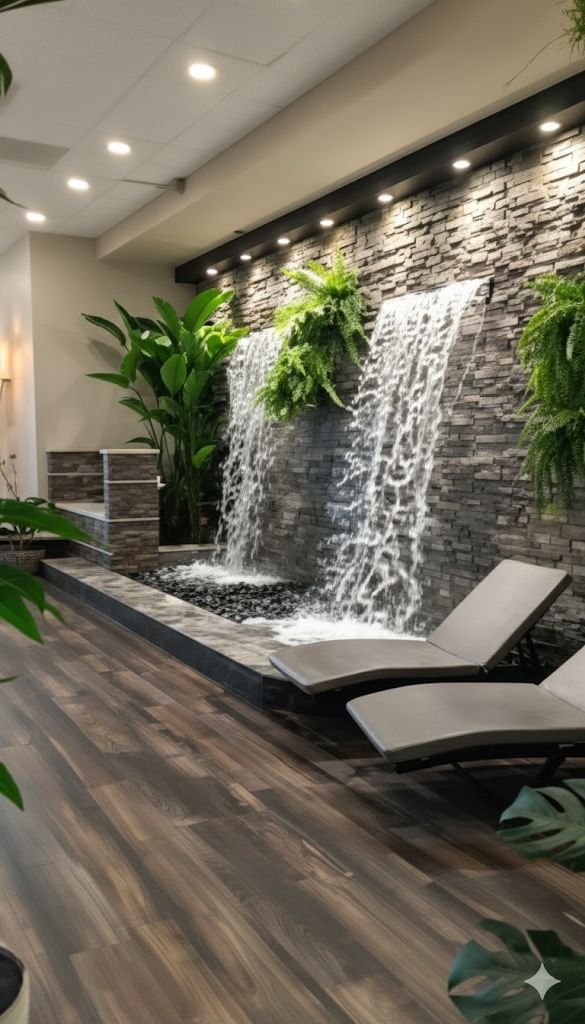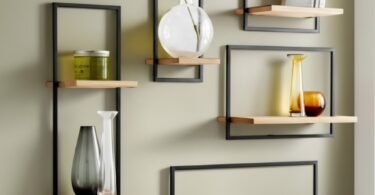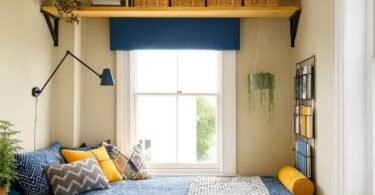Making Guests Feel Welcome: The Art of First Impressions
You know that feeling when someone walks into your home and their eyes light up? I live for those moments. There’s something magical about watching a friend step through your front door and just stop in their tracks, taking in everything you’ve created. We homeowners put so much heart into our spaces, and when someone notices, it feels like they’re seeing a piece of our soul.
I remember the first time my mother-in-law visited after we’d finished our living room renovation. She’s not exactly the type to hand out compliments freely, if you know what I mean. But when she walked in and saw our new setup, she actually gasped. Not the polite “oh, this is nice” kind of response we usually get from her, but a genuine, surprised intake of breath. That moment made every late night spent researching furniture and every dollar we stretched from our budget worth it.
The thing about creating a space that wows people is that it’s not just about showing off. Sure, we all enjoy a little recognition for our design choices, but there’s something deeper happening when guests feel genuinely comfortable and impressed in our homes. We’re creating memories, setting the stage for conversations that matter, and building an environment where relationships can flourish.
When I think about all the dinner parties, game nights, and casual hangouts that have happened in our living room since then, I realize that those initial “wow” moments from guests weren’t just about aesthetics. They were about creating a space that makes people want to stay, talk, and connect. And isn’t that what home is really about?
The best part? You don’t need a massive budget or a degree in interior design to create these moments. Sometimes the smallest changes can have the biggest impact on how guests perceive and experience your space.

Your Living Room: The Heart of Guest Experiences
Let’s be honest about something we probably don’t talk about enough. Our living rooms are basically the stage where we perform our best version of ourselves as hosts. It’s where we greet people, where conversations flow (or awkwardly stall), and where first impressions get formed faster than we can offer someone a drink.
I used to stress out about this more than I care to admit. Every time we had people over, I’d spend the entire day before rearranging pillows, adjusting lighting, and second-guessing whether our coffee table books looked too staged. My husband would find me fluffing the same cushion for the third time and remind me that our friends were coming to see us, not judge our decorating skills.
But here’s what I’ve learned after years of entertaining: people do notice your space, and it does affect how they feel in your home. Not in a superficial, keeping-up-with-the-Joneses way, but in a deeper sense of comfort and welcome. When someone walks into a thoughtfully designed living room, they unconsciously relax. They sit back in their chair instead of perching on the edge. They accept that second glass of wine. They stay later than planned.
The furniture choices we make definitely matter. That sofa you agonized over, the coffee table that took three months to find, the lighting that you adjusted seventeen times before getting it just right? All of that creates the foundation of your room’s personality. But what really transforms a living room from nice to memorable are those smaller touches, the accessories and elements that reflect your unique style.
I’ve noticed that the most inviting living rooms aren’t necessarily the most expensive or perfectly coordinated ones. They’re the spaces that feel authentic to the people who live there, places where every element seems to have a story or serve a purpose beyond just looking pretty.
Creating Comfort: Beyond Pretty Pictures
Here’s something that took me way too long to figure out: a beautiful living room that makes people uncomfortable is basically a very expensive museum exhibit. I learned this lesson the hard way when we first moved into our current house and I went a little overboard trying to create what I thought was sophistication.
We had this gorgeous but incredibly firm sectional that looked like it belonged in a design magazine. Our coffee table was a sleek glass number that reflected light beautifully but also showed every fingerprint and water ring. The whole room looked stunning in photos, but sitting in it for more than twenty minutes felt like a test of endurance.
The breaking point came during a holiday gathering when I noticed our guests migrating toward the kitchen and staying there, even though we had this perfectly arranged seating area waiting for them. They were literally choosing to stand around our kitchen island instead of sitting on our beautiful furniture. That’s when it hit me: comfort isn’t just about how a room looks, it’s about how it feels.
This realization changed everything about how I approach living room design. Yes, we want spaces that photograph well and impress visitors, but we need them to actually function as places where people want to spend time. Real comfort comes from thoughtful details like the right lighting for conversation, seating that actually supports your back, and surfaces that can handle a coffee cup without causing anxiety.
One element that I never expected to make such a difference in our room’s comfort level was sound. We live on a pretty busy street, and the constant hum of traffic was subtly stressing everyone out without us really realizing it. Adding elements that create pleasant, natural sounds has transformed not just how our living room feels, but how people behave in it. Conversations flow more easily, people speak more softly, and there’s this overall sense of calm that wasn’t there before.

The Magic of Moving Water: Why Fountains Work
Water fountains in living rooms might sound a bit fancy or over the top, but hear me out on this one. I was skeptical too until we house-sat for friends who had a small wall fountain in their main living area. Within minutes of settling in, I noticed something different about how I felt in that space.
There’s actual science behind why the sound of moving water affects us so positively. Our brains are hardwired to find these sounds calming because, evolutionarily speaking, the sound of flowing water meant safety, freshness, and life. It’s like having a little piece of nature’s soundtrack playing in your home, and your nervous system responds to it whether you’re consciously aware of it or not.
But beyond the psychological benefits, wall fountains bring something visually stunning to a room that’s hard to achieve with static decorative elements. Watching water cascade down stone or metal creates this mesmerizing focal point that draws the eye without being overwhelming. It’s movement and flow in a space that might otherwise feel too static or posed.
I love how fountains can completely change the energy of a conversation. There’s something about that gentle water sound that makes people speak more thoughtfully, listen more carefully, and just generally slow down in the best possible way. It’s like having a natural conversation moderator that keeps things flowing smoothly without anyone feeling rushed or pressured to fill every silence.
The visual appeal of a well-chosen fountain can rival any piece of art you might hang on your wall, but with the added dimension of sound and movement that makes it feel alive. When guests comment on our fountain, they don’t just say it looks nice, they talk about how it makes them feel. That’s the difference between decoration and transformation.
Shopping Smart: Finding Your Perfect Water Feature
The fountain shopping process can feel overwhelming at first because there are so many options out there. When I started researching, I made the mistake of focusing only on what looked good in online photos, which led to some interesting discoveries about how different materials and sizes work in real spaces.
My first attempt was a disaster that I can laugh about now. I fell in love with this enormous slate fountain that looked dramatic and sophisticated in the product photos. What I didn’t consider was that our living room ceiling is only eight feet high, and this thing was nearly six feet tall. When it arrived and we set it up, it completely dominated the room in the worst possible way. It looked like we’d installed a small waterfall intended for a hotel lobby.
That expensive mistake taught me that fountain shopping needs to start with your actual space, not with what catches your eye in a catalog. I spent time measuring not just floor space, but also considering sight lines, ceiling height, and how the fountain would look from different seating positions in the room. This practical approach led to much better choices.
Size isn’t the only consideration that matters more than you might expect. The sound level of different fountains varies dramatically, and what sounds soothing in a showroom might be too loud or too quiet in your actual living room. Some fountains create a gentle trickling sound, others produce more of a rushing water noise, and some are surprisingly silent. Think about your space’s acoustics and what kind of ambiance you’re trying to create.
Material choices affect both the visual impact and the maintenance requirements of your fountain. Natural stone looks gorgeous but often needs more care, while manufactured materials might be easier to maintain but could look less authentic. Glass fountains create beautiful light effects but show water spots more easily. Each option comes with trade-offs that are worth considering upfront.

Making the Right Choice: Practical Considerations That Matter
Choosing the right fountain for your living room involves balancing your design dreams with some very practical realities. I wish someone had walked me through these considerations before I made my first purchase, because understanding them upfront would have saved me both money and frustration.
Space planning goes way beyond just having enough floor space for the fountain itself. You need to think about electrical access, because most fountains require a power source that might not be conveniently located. We ended up having to run an extension cord along our baseboard for our first fountain, which looked terrible and created a tripping hazard. Planning for proper electrical access from the beginning makes the whole setup look much more professional.
Water access is another practical consideration that’s easy to overlook. Your fountain will need regular refilling, and the water will occasionally need changing. If your living room is far from a water source, this maintenance becomes much more challenging. I learned to choose fountains with removable water reservoirs that I can carry to the kitchen for cleaning and refilling.
The relationship between your fountain and existing furniture requires careful thought. A fountain that looks perfect standing alone might compete awkwardly with your sofa’s lines or clash with your coffee table’s material. I’ve found that the best fountain choices complement rather than compete with the room’s existing focal points.
Maintenance requirements vary significantly between different fountain styles, and this affects your long-term satisfaction with your choice. Some fountains need weekly attention, others can go for months with minimal care. Stone fountains might develop algae more easily, while metal ones could show mineral deposits. Understanding these patterns helps you choose something that fits your lifestyle, not just your aesthetic preferences.

Bringing It All Together: Your Water Feature Success Story
Creating the perfect living room fountain experience is really about understanding how all these elements work together to transform your space. After going through this process myself and helping friends with their choices, I’ve seen how the right fountain can completely change not just how a room looks, but how it feels to spend time there.
The magic happens when you find that sweet spot where the fountain’s size, sound level, and style work harmoniously with your existing space. It’s not about having the biggest or most expensive fountain, but about choosing one that enhances everything else you’ve already created in your room. When you get it right, the fountain doesn’t just sit in your living room, it becomes part of the room’s personality.
I love watching first-time visitors discover our fountain. They usually notice the sound first, pausing in conversation to identify where that soothing water noise is coming from. Then their eyes find the fountain itself, and you can see them visually tracing the water’s path as it flows down the surface. It creates this moment of discovery and delight that never gets old.
The long-term benefits of adding a water feature to your living room go beyond just impressing guests. We find ourselves spending more time in our living room now, choosing to read there instead of in the bedroom, or lingering after dinner instead of immediately moving to other parts of the house. The fountain has made our main living space more appealing to us, not just to visitors.
If you’re considering adding a fountain to your living room, trust your instincts about what feels right for your space and lifestyle. The perfect fountain choice is the one that makes you happy every time you hear it running and see it flowing. When you find that combination of visual appeal, soothing sound, and practical functionality, you’ll understand why so many homeowners become fountain enthusiasts after adding just one to their space.








Leave a Comment